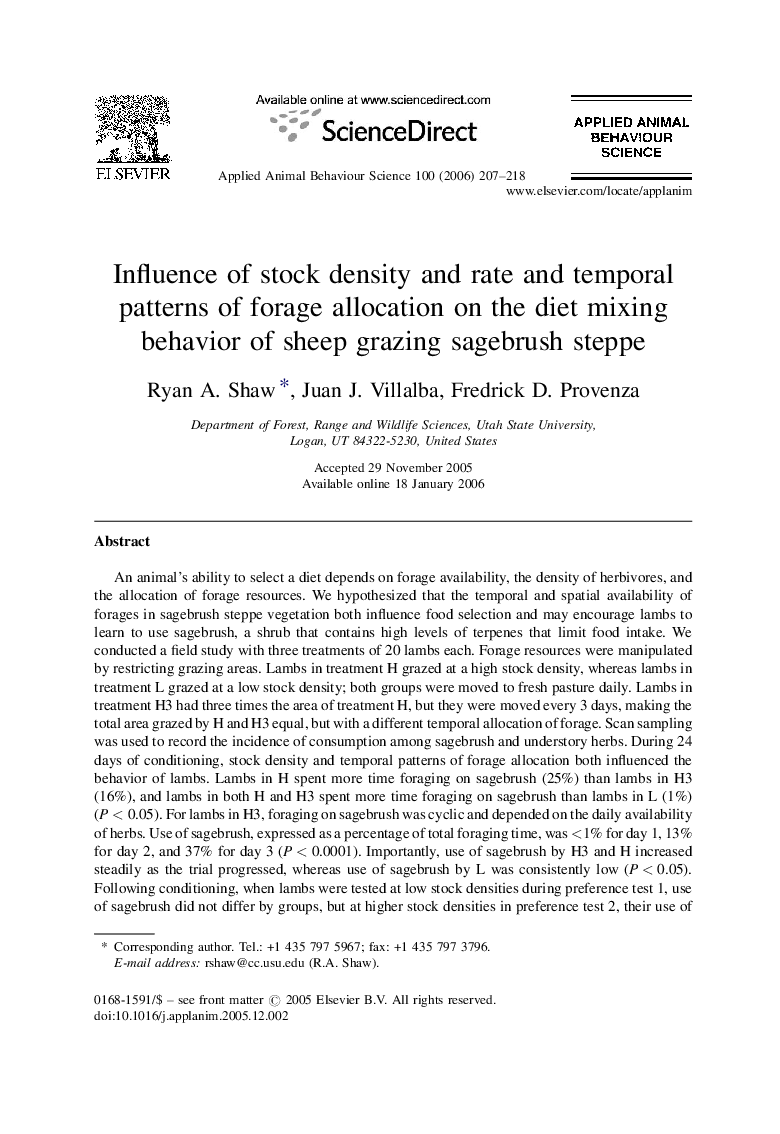| کد مقاله | کد نشریه | سال انتشار | مقاله انگلیسی | نسخه تمام متن |
|---|---|---|---|---|
| 4524122 | 1625441 | 2006 | 12 صفحه PDF | دانلود رایگان |

An animal's ability to select a diet depends on forage availability, the density of herbivores, and the allocation of forage resources. We hypothesized that the temporal and spatial availability of forages in sagebrush steppe vegetation both influence food selection and may encourage lambs to learn to use sagebrush, a shrub that contains high levels of terpenes that limit food intake. We conducted a field study with three treatments of 20 lambs each. Forage resources were manipulated by restricting grazing areas. Lambs in treatment H grazed at a high stock density, whereas lambs in treatment L grazed at a low stock density; both groups were moved to fresh pasture daily. Lambs in treatment H3 had three times the area of treatment H, but they were moved every 3 days, making the total area grazed by H and H3 equal, but with a different temporal allocation of forage. Scan sampling was used to record the incidence of consumption among sagebrush and understory herbs. During 24 days of conditioning, stock density and temporal patterns of forage allocation both influenced the behavior of lambs. Lambs in H spent more time foraging on sagebrush (25%) than lambs in H3 (16%), and lambs in both H and H3 spent more time foraging on sagebrush than lambs in L (1%) (P < 0.05). For lambs in H3, foraging on sagebrush was cyclic and depended on the daily availability of herbs. Use of sagebrush, expressed as a percentage of total foraging time, was <1% for day 1, 13% for day 2, and 37% for day 3 (P < 0.0001). Importantly, use of sagebrush by H3 and H increased steadily as the trial progressed, whereas use of sagebrush by L was consistently low (P < 0.05). Following conditioning, when lambs were tested at low stock densities during preference test 1, use of sagebrush did not differ by groups, but at higher stock densities in preference test 2, their use of sagebrush varied by treatments: H > H3 > L (P < 0.005). Thus, the availability of alternative foods, manipulated through animal density and the temporal allocation of those resources, both affected how readily lambs learned to use sagebrush.
Journal: Applied Animal Behaviour Science - Volume 100, Issues 3–4, November 2006, Pages 207–218